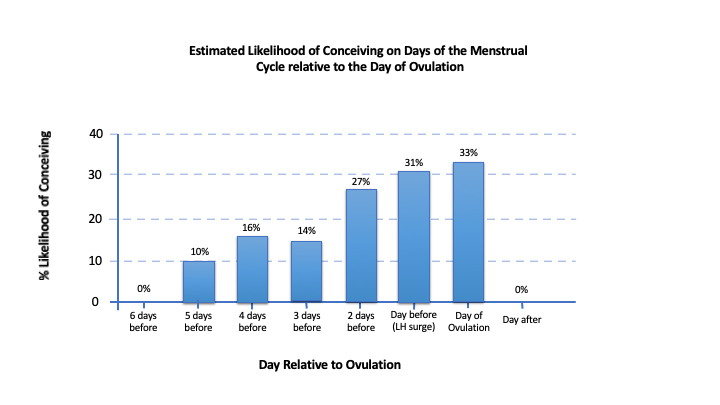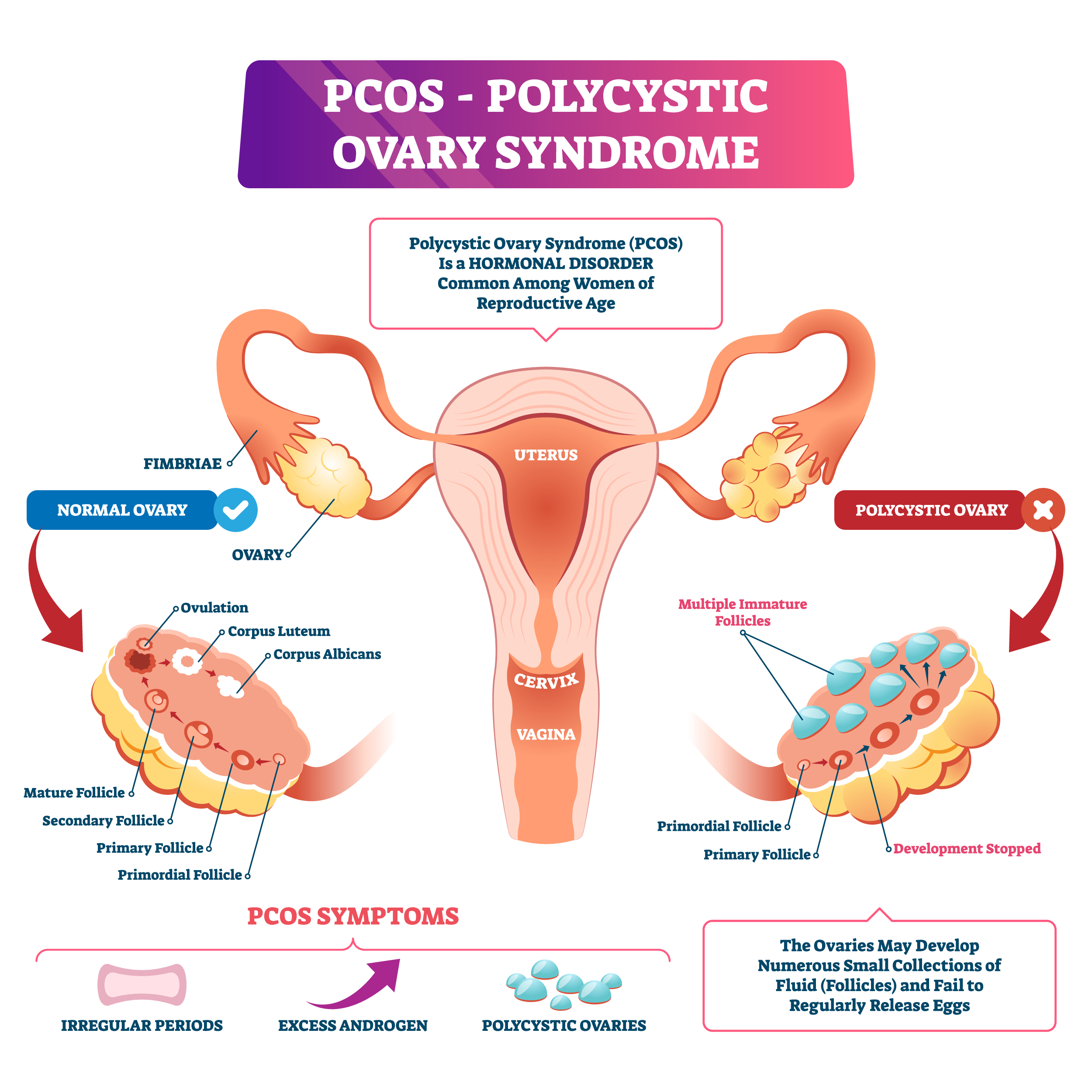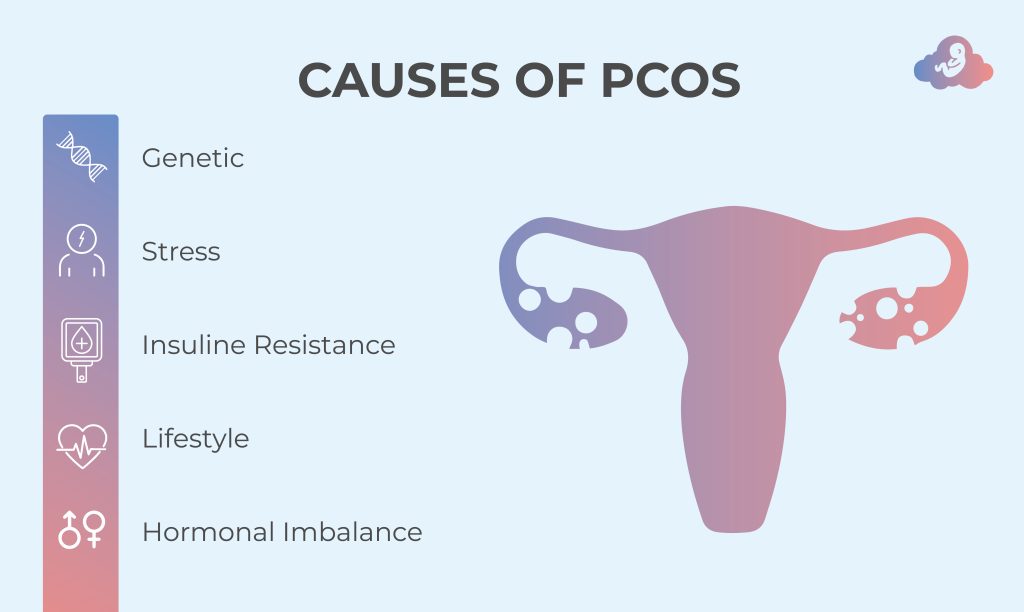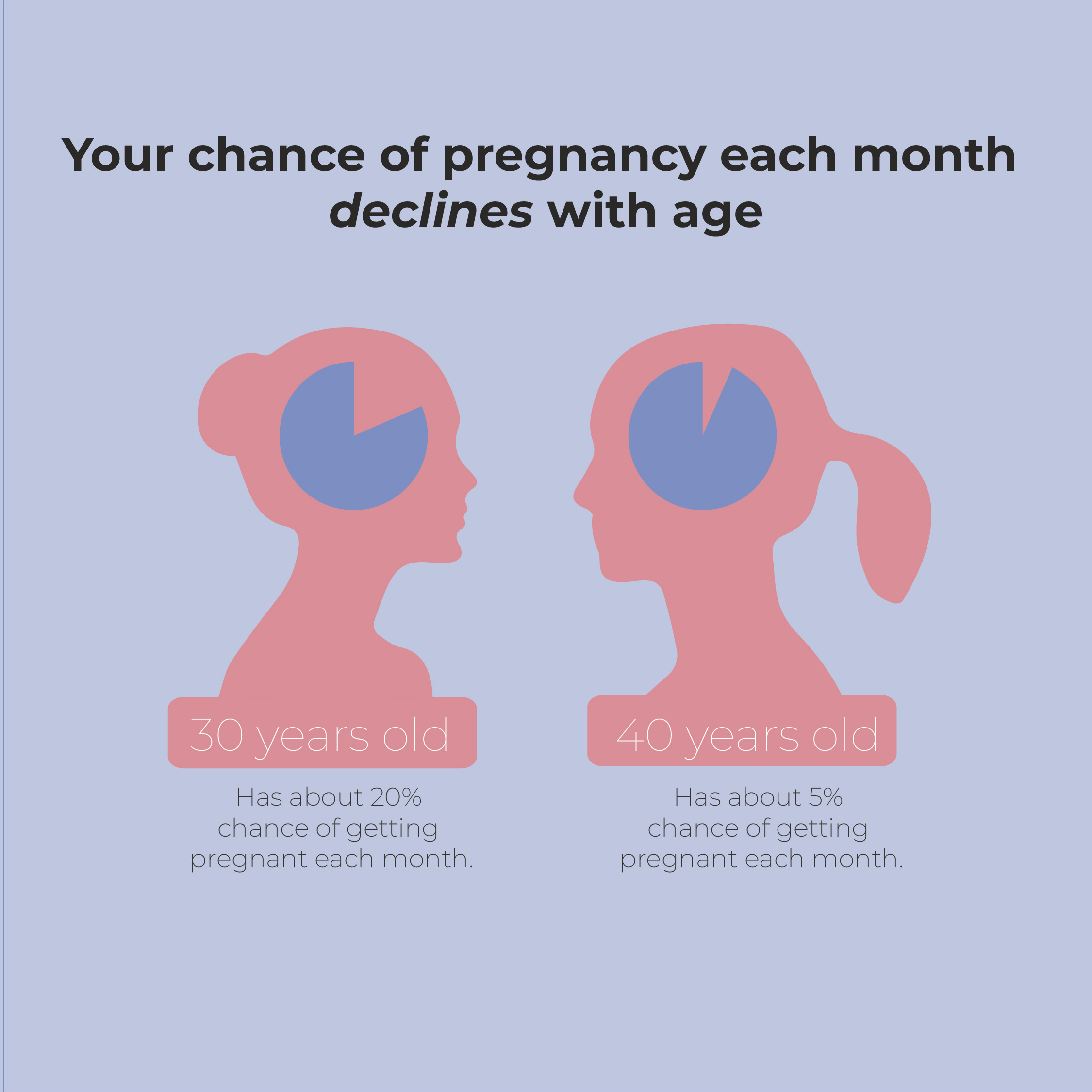How Hard to Get Pregnant After 40
What Are the Chances of Getting Pregnant After 40
What are the chances of getting pregnant after 40? Interestingly, more women above the age of 40 are having babies. The Centres for Disease Control and Prevention (CDC) estimates that the rate of above 40 pregnancies has increased since the 1970s. Between 1990 and 2012, the number of first-time births in women aged above 40 has more than doubled.
The notion that life begins after 40 could be true for some.
However, for women, turning 40 their chances of getting pregnant reduces with age. The likely reason for this is as you age, your ovary count declines. Women in the 20 to 30 age range have a high likelihood of getting pregnant in every menstrual cycle. Unfortunately, this probability reduces with increased age.

If you’re reading this and you’re in your 40’s, wondering what your odds are at getting pregnant, worry not; there is a silver lining. You can still get pregnant at 40 and have a healthy baby. A few years back, this was different although statistics showed an increase in the birth rate for women aged 40-44.
Thanks to advances in modern medicine, fertility treatments are significantly improving women’s reproductive health. To understand more about your chance of getting pregnant at 40, we’ve detailed all the fundamentals to guide you through a healthy pregnancy. Let’s dive in.
Getting Pregnant at 40
The Centers for Disease Control and Prevention (CDC) estimates that 30% of women aged 40-45 are infertile. As alarming as the statistic may be, a woman is most fertile between her late teens and 20s. Once you hit 30, your fertility starts to decline. The decline becomes more rapid by your mid-30s. By the age of 40, your fertility becomes low and natural conception becomes difficult.
Age plays a significant factor in your TTC journey. As you get older, your chances of conceiving reduce. Every month, women above the age of 40 have a 5% chance of conceiving compared to women aged 30 whose probability lies at 20%.
However, women above the age of 40 are getting pregnant using fertility treatments such as Assisted Reproductive Technology (ART). ART is a method for treating infertility where the sperm and eggs are mixed outside the body and later introduced into the woman’s body. An example of such a treatment is In Vitro Fertilization.
While ART may produce significant results that lead to conception, our recommendation is to opt for ART after prescribed fertility medication fails to yield positive results. For starters, the technique is expensive and is barely covered by insurance. You may run up a bill of $10,000 or more for ART treatments. In comparison, fertility drugs are more affordable and can similarly lead to conception. Depending on your doctor, the medical treatments will cost you less than $1,500.
While getting pregnant at 40 is possible, it has its fair share of risks. It is fundamental to understand what these risks are and how to go about them.
Advantages of Getting Pregnant After 40
Getting pregnant at 40 has plenty of benefits to it. Don’t let our biological clock fool you; you can still have a beautiful family at your prime age. Most women opt to get pregnant at an older age for valid reasons. Here are some of the benefits to it:
Well-Established Life
Raising a child requires financial preparedness. As such, people opt for having kids after achieving a better financial status. This allows them to cater for the child’s needs fully. A child’s medical care can run up your bill, especially if you’re partying out-of-pocket. By the age of 40, most women have worked, saved, and invested enough not to feel the overwhelming financial burden of raising a kid.
More Time for Family
By the age of 40, it is assumed that you’ve checked off items on your bucket list. The road trip with your friends; done and dusted. A reckless expedition in an unknown town; done. You probably feel it’s the right time to settle and have a family. With the other activities out of the way, you can spend more time nurturing your child and growing your family.
It is also the pinnacle of experience, having lived close to half a decade. You’re more experienced and mature to handle the responsibility of bringing up a child.
Longer Lifespan and Better Cognitive Abilities
Studies suggest that children born to older women tend to have a higher IQ demonstrated by high graduation rates and test scores. Besides, children can promote a longer life span in their parents and reduce mental decline as they age.
You Are Certain About Your Path
Statistics suggest that 45% of early marriages often lead to divorce. Although there are other underlying reasons, we often don’t end up spending forever with partners we met in our 20s. At 40, you are certain of your life choices and the path you are on. Evidently, this is the right time to have a child. You are also certain of the partner you met, reducing the chances of divorce or separation that affects the child’s welfare and upbringing.
Healthier Lifestyle
An older mindset comes with better decisions. We can’t deny that our teens and 20s were filled with impulsive decisions with less regard for our health. At age 40, your choices matter, and most people advance towards a healthy lifestyle. This means by 40; your body is in a healthy position to support a pregnancy.
Chances of Getting Pregnant at 42 Naturally
Many women wonder about their chances of getting pregnant at 42 naturally. While fertility does decline with age, it is still possible to conceive in your 40s. Here’s what you need to know about your chances of getting pregnant at 42.
Fertility at 42
By the age of 42, a woman’s fertility has significantly decreased. The number and quality of eggs decline, making it more difficult to conceive. Additionally, the risk of miscarriage and chromosomal abnormalities increases. However, every woman is different, and some may still have a good chance of getting pregnant at 42.
Factors that can affect fertility at 42 include:
- Overall health and lifestyle
- Previous pregnancies and reproductive history
- Genetic factors
Increasing Your Chances
While the chances of getting pregnant naturally at 42 may be lower, there are steps you can take to improve your fertility:
- Seeking medical advice and fertility testing
- Healthy lifestyle changes, such as maintaining a healthy weight and avoiding smoking and excessive alcohol consumption
- Considering assisted reproductive technologies, such as IVF
It’s important to discuss your options with a healthcare provider to determine the best course of action for your individual situation.
Chances of Getting Pregnant at 40 During Ovulation
Many women wonder about their chances of getting pregnant at 40, especially during ovulation. Here’s what you need to know about fertility and conceiving at this age.
Age and Fertility
As women age, their fertility naturally decreases. By the age of 40, the chances of getting pregnant each month are lower compared to when they were in their 20s or early 30s. This is due to a decline in the number and quality of eggs in the ovaries.
However, it’s important to note that every woman is different, and some may still have a good chance of conceiving naturally at 40.
Ovulation and Pregnancy
Ovulation is the best time to try to conceive, as this is when the egg is released from the ovary and is available for fertilization. At 40, ovulation may become irregular, making it more challenging to predict the most fertile days.
Using ovulation predictor kits or tracking basal body temperature can help pinpoint ovulation and increase the chances of getting pregnant.
What Is the Fastest Way to Get Pregnant at 40?
Due to the declining number and quality of eggs in women above 40, the chances of getting pregnant at age 40 and above become slimmer. Despite most women appearing quite young and youthful in their 40s, their biological clock is ticking away.
Based on statistics, at age 40, you have a 5% chance of conceiving during your menstrual cycle. However, this should not alarm you. There are steps you can take to improve your fertility and likelihood of getting pregnant at 40 and above. Here’s how:
Get Pre-conception Advice
To get the best out of your pregnancy journey, it’s best to walk it with your doctor. Seeking an obstetrician and gynecologist (OB/GYN’s)counsel before Pregnancy helps you understand your body and its preparedness for Pregnancy.
Additionally, it’s also essential to outline any underlying conditions that would complicate your Pregnancy. Prevention is often better than cure, and for a woman in your prime age, preconception counseling will aid you in planning your Pregnancy while watching out for risks. The planning journey could constitute fertility treatments or medication to balance your hormones.
Take up Healthy Habits
At age 40, it’s the right time to double back on unhealthy living and take up dieting and exercise. In your 20s, an unhealthy lifestyle wouldn’t hinder you from getting pregnant. However, at 40 and above, your system is slowing down, and the best way to keep it active is with healthy habits. Eating a nutrient-rich diet and exercising helps keep you in impeccable shape. Not to say that your body’s shape is a prerequisite to getting pregnant; however, having a healthy weight is prudent.
What’s more, it is advisable to steer clear of caffeine and alcohol. Some doctors would prescribe eating a high-fat diet. No, this doesn’t mean consuming loads of junk but fats in ketogenic diets. Fats, such as cholesterol, play a crucial role in producing reproductive hormones such as Progesterone, Estrogen, and Testosterone.
Consider Taking Supplements
The CDC advises all women embracing the trying to conceive (TTC) journey to take 400 micrograms (400 mcg) of folic acid daily. Folic acid is vital in preventing the development of congenital disabilities known as Neural Tube Defects (NTDs).
In addition to taking folic acid, adding coenzyme Q10 (CoQ10) to your daily supplement is advisable. CoQ10 is an antioxidant that is found in the human body’s cells. The enzyme exists in the form of ubiquinone, an oxidized state, and ubiquinol, an active and reduced state. CoQ10 plays an active role in energy production. The enzyme supports various metabolic functions and protects cells from free radical damage. However, we’ll focus on its role in Pregnancy.
Taking CoQ10 helps improve your egg quality and promotes successful IVF outcomes. As you may know by now, aging causes a natural decline in your fertility and egg quality. With CoQ10, you can counter the effects of ovarian aging by revitalizing the energy and mitochondrial production roles. In turn, this promotes the development of a quality embryo, increasing your chances of a healthy above-40 pregnancy.
In addition to improving embryo quality, CoQ10 also enhances the rate of fertilization and Pregnancy while reducing the cases of stillbirth.
Steer Clear From Stress
Evidently, every human faces a stressful situation. Being pregnant is no different. It comes with an overwhelming sensation of stress and mixed emotions. Some of it stems from the body changes or hormones that induce mood changes. As a woman over 40 looking to get pregnant, you should avoid stress at all costs. Stress causes several health problems, especially during pregnancy. It can cause high blood pressure and heart complications.
Taking up practices such as tai chi or yoga will help balance the stress levels in your body, promoting blood supply in your uterus. The pressure of getting a child may get to you as you hit 40, but be wary. Stressing about it may counter your efforts to get pregnant.
Track Your Menstrual Cycle
Women who hit 40 often ovulate earlier than usual. Women in their 20s to 30s stand a chance of getting pregnant between the 12th to the 14th day if they’re on a 28-day menstrual cycle. Therefore, if you’re trying to get pregnant, it’s best to understand the right time to have sex. In most cases, you may ovulate on day nine or day 10.
The ideal way to know the right time is through tracking your menstrual cycle. Ovulation happens a fortnight before your next scheduled period. With a period tracker app, you can time your next ovulation. You can also use an ovulation kit and check for cervical mucus. Timing your ovulation increases your chances of getting pregnant. It is advisable to have coitus with your partner before, after, and during ovulation. This is because the eggs and sperm stay in the body for a few days before absorption.
Consider an Egg Donor
Sadly, most women above the age of 45 cannot conceive with their eggs because the quality of eggs is quite low to support a healthy pregnancy. However, that doesn’t mean you can’t carry a child.
A suitable alternative for an over-40 pregnancy is donor eggs. With donor eggs, you can still have a biological child. Your partner’s sperm will fertilize the egg while your blood will nourish the fetus. Moreover, it is an affordable option compared to other fertility treatments.
If you’re planning to have a baby later in life, you should consider the following methods and discuss them with your doctor.
Oocyte Preservation
Also known as egg freezing, oocyte preservation is a medical procedure that preserves a woman’s eggs. Women use this technique to postpone their Pregnancy to a later date. The doctor extracts some eggs from your ovaries and freezes them for later use in an IVF procedure.
The procedure is common in women who are yet to start radiotherapy or chemotherapy and those undergoing Assisted Reproductive Technologies who don’t wish to freeze their embryos. Over and above that, if you’re thinking of a later pregnancy and your family has a history of early menopause, it’s advisable to preserve a few viable eggs.
Intro Vitro Fertilization (IVF)
IVF is a popular assisted reproductive technology (ART) that involves complex steps and procedures to combat infertility and genetic complications. When planning a pregnancy above 40, IVF is a common procedure that doctors recommend.
It involves collecting eggs from your ovaries and fertilizing them with sperm in the lab. As mentioned, IVF also gives you a chance to raise your biological child since you get to use your partner’s sperm and your eggs. After fertilization, the egg(s) are injected into the uterus for implantation. An IVF cycle takes three weeks or longer.
In other cases, you can also have a surrogate carry the baby. This procedure will still involve your eggs and your partner’s sperm. However, the surrogate will take your baby to term. The surrogate option is ideal if you’re experiencing medical problems with your uterus or have a condition that makes Pregnancy a huge risk for you.
Fertility Medications
An inexpensive fertility treatment option is fertility medications. If you have trouble conceiving, your doctor will perform several tests to ascertain the root cause. Some of these tests include ovulation testing, ovarian reserve testing, hysterosalpingography, imaging, and hormone testing.
The treatment you receive depends on the reason for infertility, age, personal preferences, and length of infertility. Fertility drugs invoke ovulation as your body’s hormones would. Sometimes the treatment would trigger ovulation or simulate the ovary to produce a better egg. Notably, since fertility is a complex process, fertility medication requires financial, physical, and psychological commitments.
Intrauterine Insemination (IUI)
IUI is a form of artificial insemination where concentrated sperm is directly inserted into your uterus. The procedure involves using a small catheter and a speculum to place the sperm in your uterus during ovulation.
It is a common method used by women who wish to become pregnant by donor sperm. It’s also a to-go-to procedure for unexplained infertility as the first treatment option.
By the time you hit 40, you have a 5% chance of conceiving during ovulation. Although your fertility declines with age, it is still possible to get pregnant. The only drawback is that it’s harder to conceive naturally in your 40s compared to previous years.
While there are many underlying reasons for this aspect, a significant factor is the deterioration of your egg’s quality which can lead to the onset of genetic abnormalities in the infant. Furthermore, your ovarian reserve dwindles with age. This means by the time you hit 40; you have fewer eggs in store than you did probably 15 years back.
FAQ
What Risks Are Associated With Getting Pregnant After 40?
Generally, women may face pregnancy complications at any age. However, at 40 and above, the likelihood of these complications occurring is more. Besides, getting pregnant may also be an uphill task because of menopause. Menopause is a normal biological process women over 40 go through. An indication of menopause is not having your periods. Some women may think they’re pregnant, but it is a sign their body is no longer ovulating.
Some women experience menopause in their 40s to 50s. Nonetheless, in the United States, the average menopause age is 51. You may beat the odds and get pregnant at this age. However, there are significant risks to it, such as;
Birth Defects
Birth defects in infants can occur with Pregnancy at any age. However, an over 40 pregnancy has a high probability of birth defects for the baby. A liable cause is the genetic abnormalities found in the eggs of mothers above 40. As you age, your eggs become more chromosomally absorbed.
There are many attributions to these abnormalities, such as the stress cumulation in the egg’s DNA strands or reduced levels of normal oocytes. According to the U.S National Birth Defects Prevention Study, women above the age of 40 are highly likely to deliver babies with birth defects that affect the lungs, heart, esophagus, skull, and genitals. The most common birth abnormality in infants is Down Syndrome. The chance of having a baby with down syndrome at age 40 increases to 1/70 compared to age 33, which stands at 1/400.
Preeclampsia
Being pregnant causes various changes in your body. Aside from putting a strain on your heart, it also causes the release of the progesterone hormone that raises your cholesterol and blood levels. This increase potentially leads to the onset of preeclampsia, especially for women with high blood pressure. Moreover, giving birth at age 40 and above raises your risk of preeclampsia by 3.1%.
Preeclampsia, also known as toxemia, manifests symptoms of kidney damage due to high protein levels in urine as well as other signs of organ malfunction. If not treated, preeclampsia can prove to be fatal or lead to severe complications for the baby and mother. Preeclampsia can lead to the development of eclampsia, a condition that causes seizures.
In most cases, as a proactive measure, doctors recommend early delivery of the baby. However, this depends on the condition’s severity and how far along you’re pregnant.
Low Birth Weight
Women above the age of 40 are likely to deliver babies with low birth weights. Infant low birth weight (LBI) refers to a baby born weighing less than 5 pounds, eight ounces. Babies with LBW are smaller with minimal body fat. Also, they have large heads that are disproportionate to their body.
The primary cause of LBW is growth restrictions by the fetus and premature birth (before 37 weeks). Growth restrictions occur if your baby is not getting adequate nutrition to gain weight during Pregnancy. An above-40 -Pregnancy comes with complications that can induce premature delivery of the baby leading to low birth weight. Infants born with low birth weight often spend time in the neonatal intensive care unit before getting discharged from the hospital.
Miscarriages
A woman above the age of 40 runs the risk of miscarriage. This risk increases with age, where 1 in every two pregnancies by women above the age of 45 results in a miscarriage. Fetal abnormalities cause miscarriages during gestation. The abnormalities are mostly genetic, and studies estimate that nearly half of all miscarriages occur due to missing or extra chromosomes.
As a woman ages, her egg quality declines, leading to a high risk of fetal genetic abnormalities. Therefore, the abnormalities are not inherited; rather, they occur during the splitting of cells during Pregnancy.
Still Birth
Going past your due date is risky. Although sometimes it may not be alarming, for women above 40, it could be a sign of stillbirth. After 40 weeks of gestation, the risk of a stillbirth heightens. It is crucial to monitor your baby’s movements and report any incidents to your doctor if you feel your baby moving less.
Large Baby
As an older mom, you pose the risk of having a large baby, a condition known as Macrosomia. This is when you deliver a baby over 4.5 kg or 10lb. Medical practitioners attribute this condition to gestational diabetes, which is prevalent in women above the age of 40.
Gestational Diabetes
Gestational diabetes is a type of diabetes that develops in pregnant women. The conditions affect how your body absorbs sugar (glucose). It tends to cause high blood sugar, complicating your Pregnancy and affecting your baby’s health. Women above 40 have a higher chance of developing gestational diabetes than women between the ages of 20 to 30.
The good news is you can control it. Eating healthy meals, doing light exercises, and taking medication help to regulate sugar levels. Keeping your blood sugar levels in check is ideal to ensure safe delivery and keep your baby healthy.
Gestational Hypertension
As mentioned earlier, being pregnant puts a strain on your organs, including your heart. Older women have a high risk of gestational hypertension, a condition where you develop high blood pressure during Pregnancy. You may confuse it with preeclampsia. Yet, the two are medically different.
Gestational hypertension often arises after 20 weeks of Pregnancy. In most cases, it goes away after delivery, but some women who get diagnosed have a high likelihood of developing chronic hypertension.
Cesarean Delivery
As you age, your uterine muscles become less effective. As a result, an above-40 pregnancy will likely lead to a cesarean delivery. Moreover, your doctor may advise having a cesarean delivery due to the risk of having a large baby.
Ectopic Pregnancy
The risk of an ectopic pregnancy rises with age; hence women over 40 tend to develop this type of Pregnancy. Ectopic Pregnancy refers to the implantation of the fertilized egg in the fallopian tube. In a normal pregnancy, the egg is fertilized in the fallopian tube and is expected to travel down to the uterus for implantation. If an ectopic pregnancy occurs, the embryo needs to be removed since there is less room for growth. In worst cases, the pregnancy could lead to a rapture of the fallopian tubes, which is fatal for the mother. Other symptoms of ectopic pregnancy include sharp abdominal pains and severe uterine bleeding.
Do Abnormal Eggs Ovulate?
As indicated, the quality of your eggs goes down with age. It is not unusual for a sperm to fertilize an egg that is deemed to be abnormal. However, your body can tell that the egg is abnormal, resulting in the embryo not implanting in the uterus.
In the rare case where implantation takes place, a miscarriage may ensue since the embryo will fail to develop.
Final Thoughts
Despite people’s opinion, getting pregnant at 40 and above is possible. There is never a defined time to start your family, so take your time and don’t succumb to the pressure. When you’re ready to have a child at 40, talk to your doctor about the risks and ways to mitigate them in order to achieve a successful pregnancy. All the best!


















